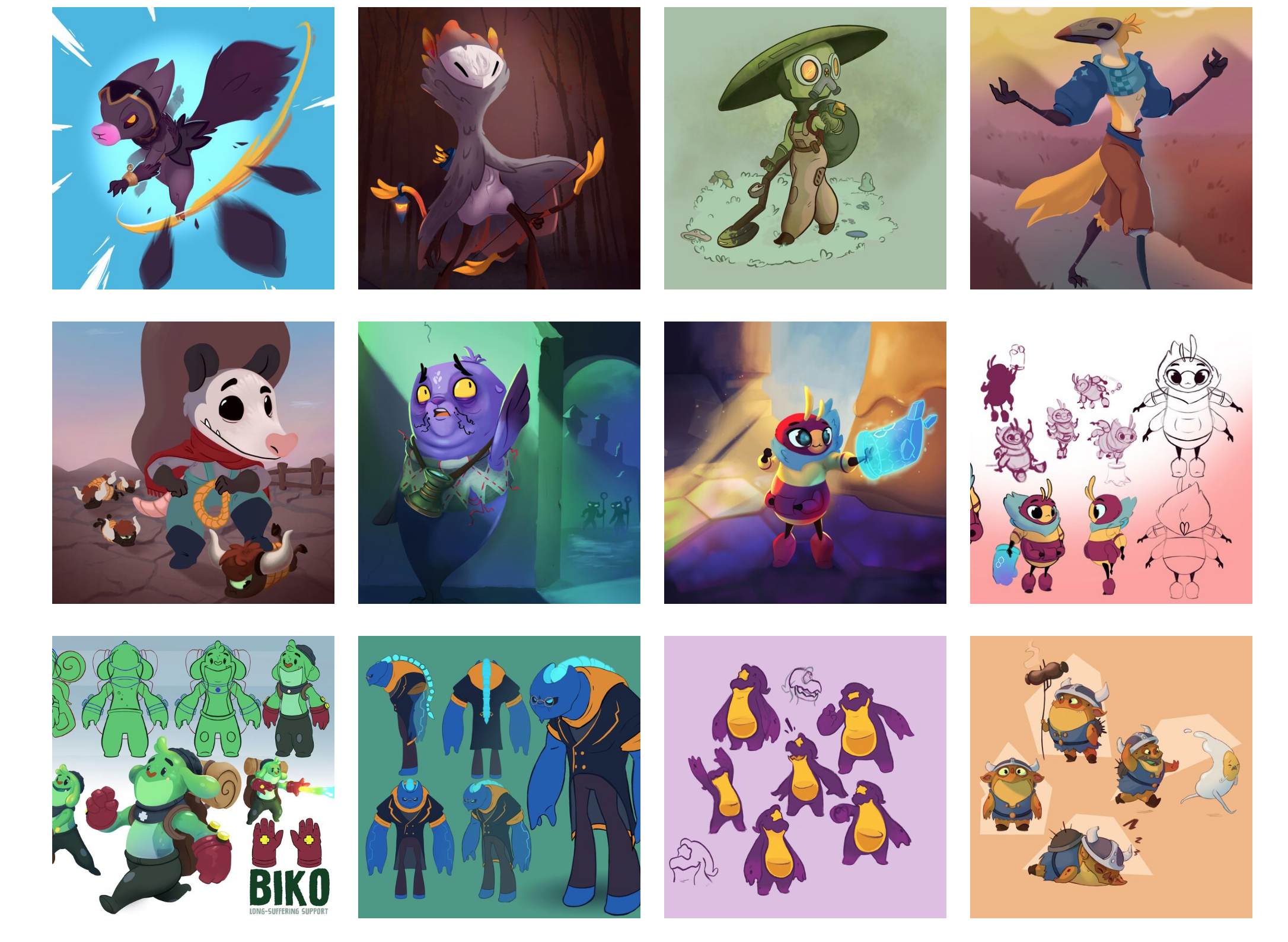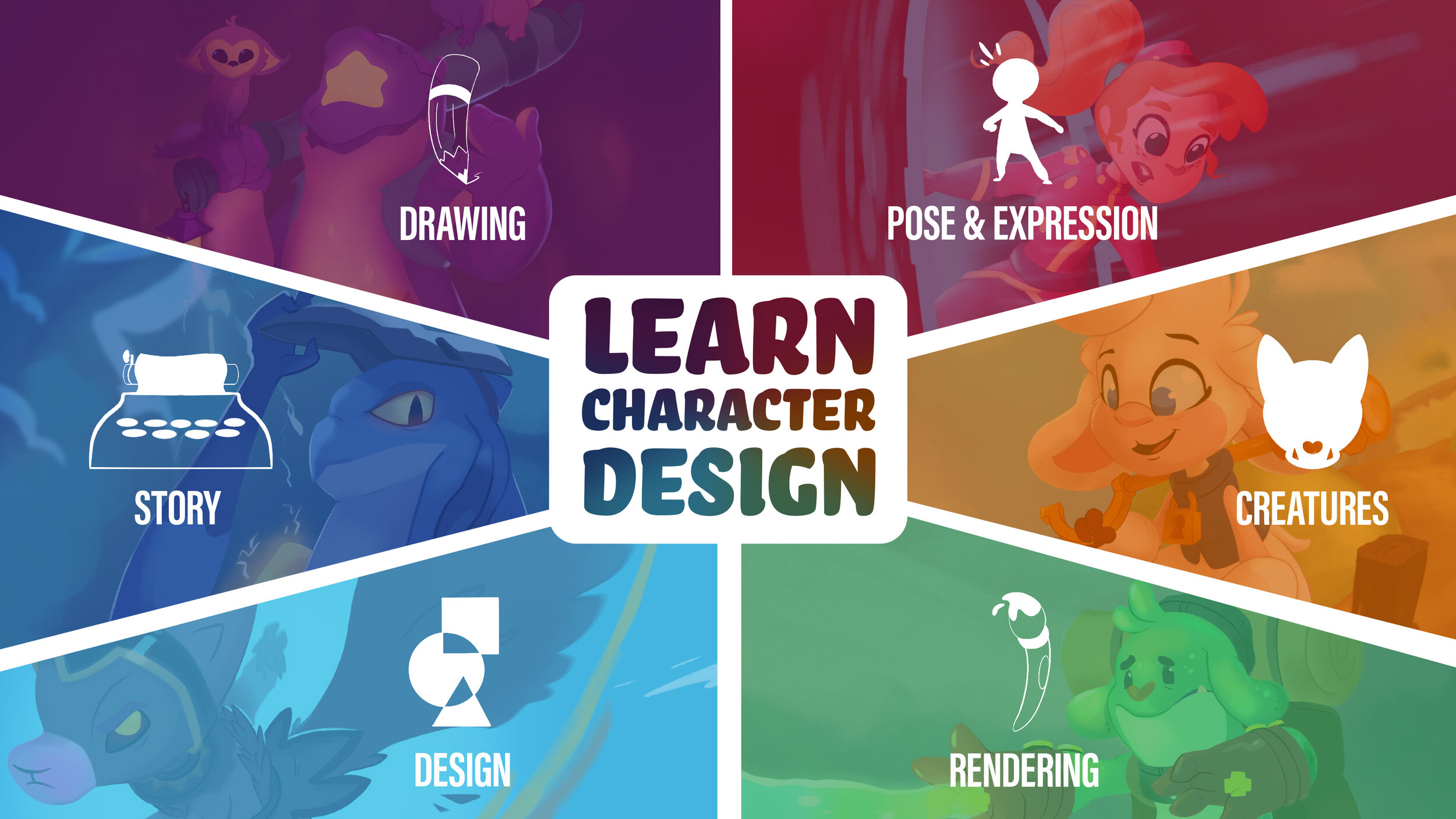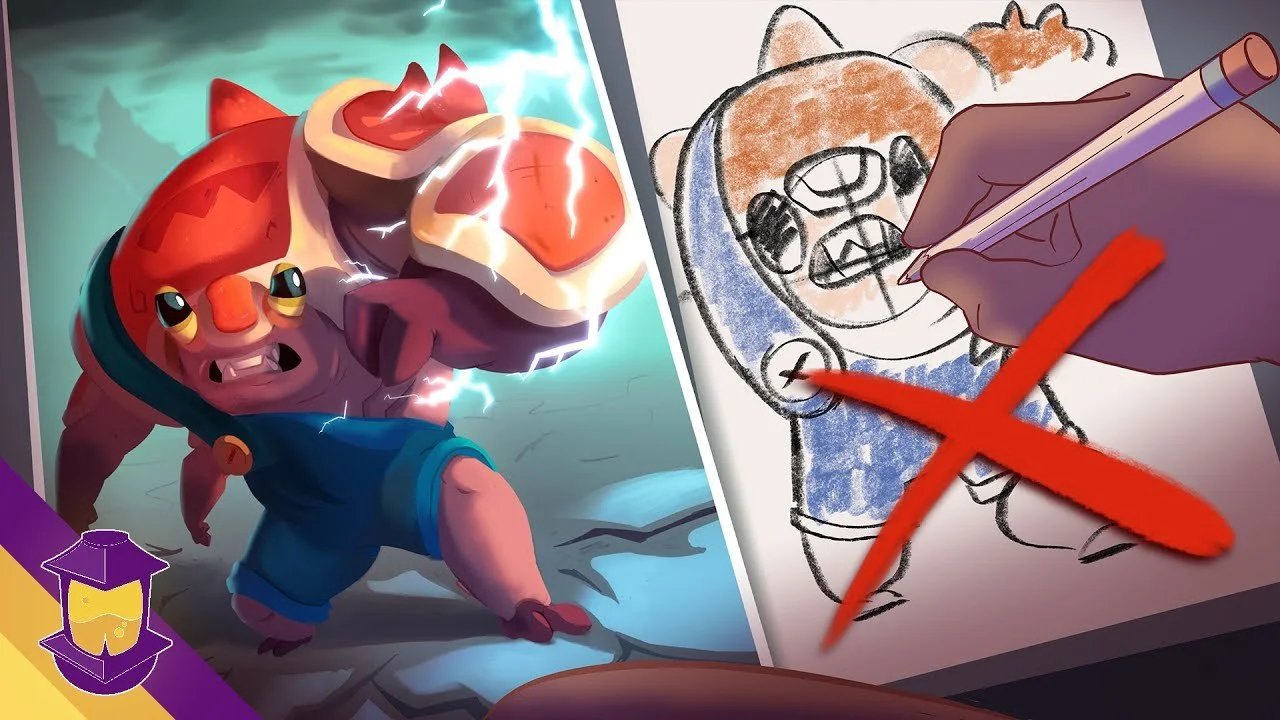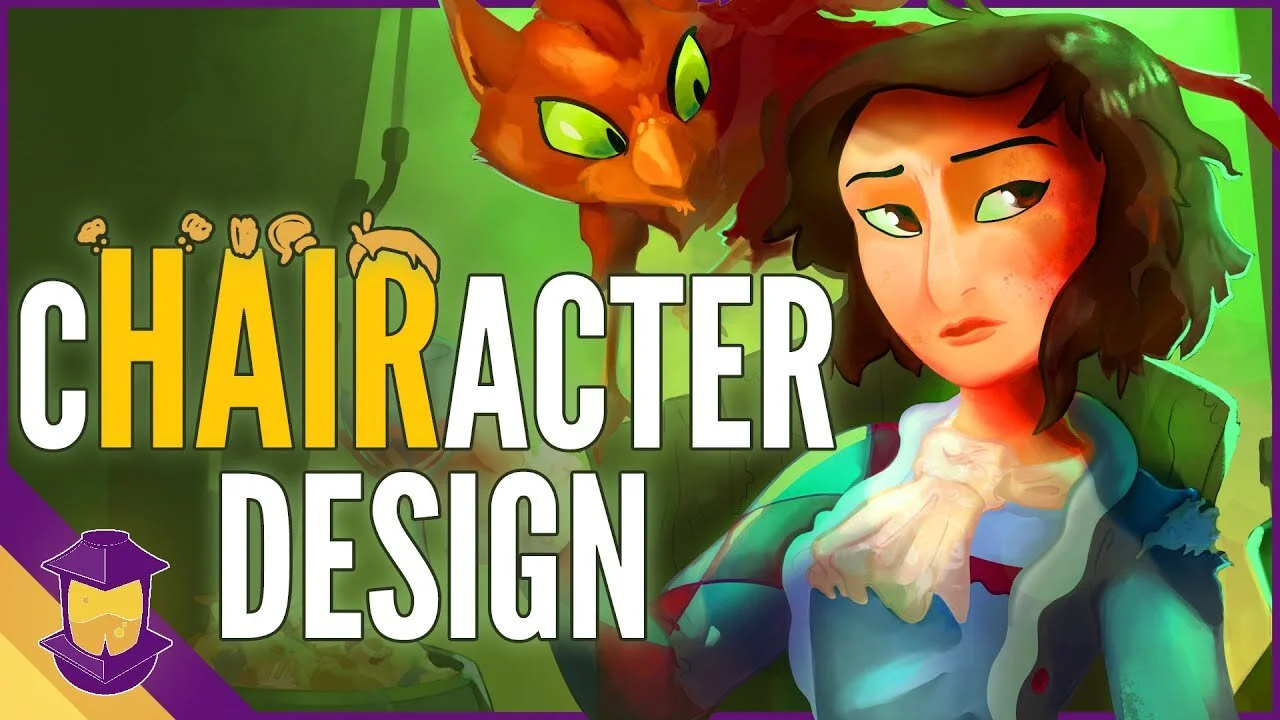How do you build an art portfolio that will impress potential clients and speak to your strongest assets?
It’s been said many times that art is a field where you really don’t need a degree, you don’t need certification, all you need is a strong portfolio. Proof that you can do the work is pretty self-evident.
I think there are things like being an effective communicator and having decent people skills that are also needed. But a strong portfolio makes it so someone that’s looking for work to be done, can tell that you can do it.
In this video, I’m busting the top 3 myths about building a portfolio and equip you with strong, experienced advice to guide you as you build your own. (oh and FYI, I also thought it’d be fun and insightful for me to critique and update my own portfolio.)
Watch this video now!
Myth 1: “If You Build it They Will Come”
Do you need a website for your work? Absolutely.
But I think the pitfall too many artists fall into is setting up shop, finishing their portfolio, and kicking back to wait for the jobs to start rolling in.
This would be like letting a stack of business cards sit in a drawer for a year and wondering why no one’s contacting you.
Here are the facts:
The web has focused more on social platforms in the last decade, and so fewer and fewer people are just going to “happen” across your website.
But barring that still, I think a portfolio pairs well with activity. Art posted recently, active work on a project—it all helps potential clients see that you are currently working. They won’t be wondering “Wait… when was this thing last updated?”
Activity is also the way that new eyes will get on your work, whether it be from social media or elsewhere. For me, weekly videos in addition to the various places I share my art do a lot to help new people learn about what I do.
To bust this myth further, don’t just wait for the work to come to you, but you need to go to it.
Once your portfolio is made, you’ll be able to show visually-oriented clients: “Why yes, I can do something like what you’re asking!”
Need some advice on perfecting your art skills? Watch this video on 4 Lessons You NEED To Elevate Your Character Art Skills!
Not confident yet in your design skills? Want to master your designs before launching a live portfolio? Check out Module 3: Design from the Learn Character Design Course.
Myth 2: “I Need to Put it ALL in There”
Less is absolutely more when it comes to portfolios. It’s necessary to do some filtering when it comes to quality. You don’t want to throw every kind of work you’ve ever done into your portfolio and expect the client to parse out what you’re capable of.
Some will say puritanical things like, “If you want to be a character designer, ONLY put character design work in.”
Here are the facts:
While I think there’s a good nugget in that, I’d say more generally, put the work in that you want to be hired for.
If you’re like me and wouldn’t be too excited to work on a gritty military animation project, then you don’t have to include examples of that just because you’ve seen other legit artists do so.
When it comes to the kind of work you do want to do, I’ve found that it helps to break the work into categories. That way you’re organized and it makes a little more sense to someone looking only to hire you for animation. “Oh look, here’s the section of their animation! Thank goodness!”
Looking for guidance on how to better translate your character’s poses or expressions to your potential client? Check out Module 4: Pose and Expression from the Learn Character Design Course.
Are you looking to be hired for your animation skills? If so, here is a great video aimed to help you through the character design process: Let’s Make: An Animated Series Character!
Myth 3: “Fan Art Won’t Get You Hired”
While there is some nuance to this and a degree of professionality where the Venn diagram of fan art and portfolio start to differ, this myth simply isn’t true.
Here are the Facts:
As so much IP continues to get rebooted and spun off, longtime fans end up getting hired because of their fan art.
Plus, if you specialize in rendering dynamic, photorealistic paintings and you’ve done a fantastic painting of Hey Arnold, that shows clearly what value you provide, especially to people that recognize Arnold.
Case studies and projects that work as proof of concept are just as valuable in showcasing what you’re capable of beyond an image of the finished project.
Interested in taking the Fan Art route? Watch this video on How to Make Fanart that Make an Impact
Do you want to master your rendering skills? Check out Module 6: Rendering from the Learn Character Design Course!
Let’s Revisit My Old Portfolio, Shall We?
So let’s take a step back to May 2020, and look at the portfolio I had then. Some of the things I said during this recording align with my goals for my work then and some of those things have changed.
I think what’s important to remember is that a portfolio can be a fluid thing. It’s there to work for you, and nothing there is set in stone.
So like I mentioned, many things I talked about in my videos at that time were oriented toward the kind of work that I wanted to get.
I wanted to add an animation section, I wanted to continue including Animal Crossing commission examples. And while I wouldn’t turn down commission work nowadays at the right price and schedule, it’s not what I’m actively seeking out now.
Now that I have time to primarily work online with a select few clients and with my own projects, I can pick and choose who I work with a lot more.
Two things I’d still like to include are:
More tertiary visual development work, props, and environments (I just haven’t been able to practically focus on that kind of work).
A section for animation work.
I am currently working on the pilot for Stormfellers, where I am doing all of the art and animation. It functions beautifully as a case study, same with the game projects I’m working on that include animation.
Since I only want to do my own animation (and given how time-consuming it is) I’m in no rush to include an animation section just yet. But I have plans to down the line. This therefore also helps keep my portfolio more simplistic and focused for now.
So jumping forward, here is a glimpse of what I have now, and immediately, the work is just so much more vibrant.
I’ve taken advantage of the monthly paintings for Biko’s Backpack trading cards, and some of the skill-building from those have really paid off. These qualify a bit more as illustrations though, so down the page, I have some of the simple one-offs, poses, and turnarounds for characters.
This may not be the exact way that you should lay your portfolio out, but make sure that it suits your purposes.
For example, think about why someone is coming to your page. There are potential clients for one thing, but there may simply be interested fans or people that might want to learn more about your characters. For me, I think about these things as well as those interested in taking the Learn Character Design Course and go, “Well, can he put his money where his mouth is?”
I’ve been a working artist for almost 15 years, and trying to show everything I’ve ever done or can do is not going to fit on one digestible page. This is not necessarily a portfolio that shows off my full range. But it does, I think, show my strengths. And maybe that’s the best way to approach portfolios.
That’s all I have in the way of creating a portfolio that is sure to win over your next client!
So in review:
Be a go-getter. Actively posting, not just on social media, but on your website will help future clients see that you’re actively in business
Post the work you want to be hired for. Don’t worry so much about getting it ALL in there. Focus on putting examples of the work in that you want to be hired for.
Don’t fear fan art. More often than not, longtime fans get hired to work on a dream project because they have posted some excellent fan art. So while you may not want that to be your centerpiece, remember posting fan art is ok!
Have you had some hang-ups with your portfolio recently? What have you excluded or included in your portfolio? Share with me in the comments section below! We’d love to hear what you have to say.
Do you Want to Master your Digital Art and Character Design Skills?
You Can Do it in Just Six Steps
Take the online course now that has helped countless students master basic and advanced character design techniques.
Welcome to the Forge!
If you’re new here, get to know our mission here at Character Design Forge and start designing your best characters yet.




















